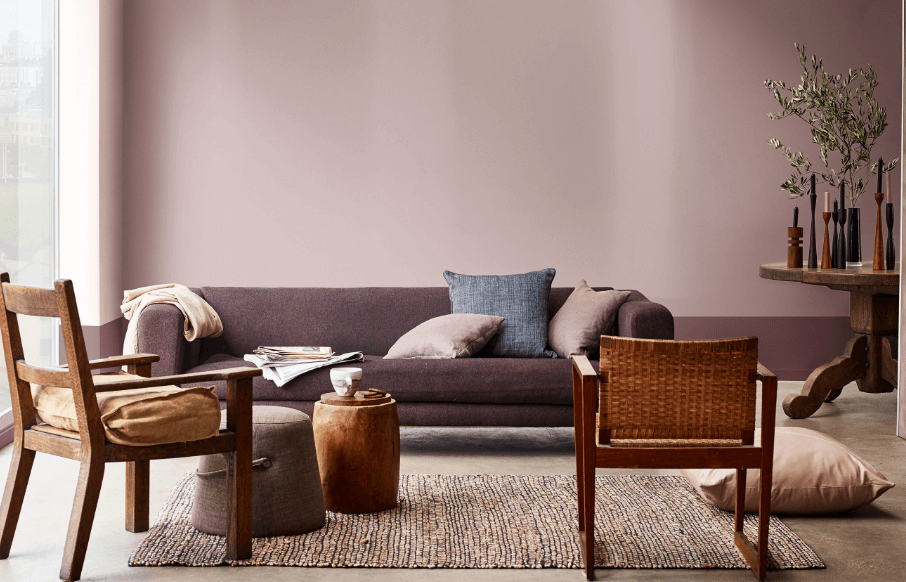How to Choose the Right Paint Colors for Every Room in Your Home
When it comes to home décor, one of the most significant choices you can make is selecting the right paint color for each room. The color of your walls sets the tone of the space, creates ambiance, and even influences how you feel in that room. Whether you’re updating your current home or designing a new one, picking the right paint colors can make a world of difference in your overall living experience.
In this comprehensive guide, we will take you through the essential steps to choosing the perfect paint colors for every room in your home. From understanding the impact of color psychology to how lighting affects paint hues, we’ll cover it all to help you create a space that feels just right.
Introduction: Why Color Matters in Home Design
Color is one of the most powerful elements of interior design. It influences our mood, perception of space, and even how we interact with our environment. For instance, a room painted in a soothing color can help you relax after a long day, while a bright, bold color can energize a space and make it feel more lively. Your choice of paint color reflects not only your personal style but also your lifestyle. By considering factors like room function, lighting, and color psychology, you can ensure each room in your home complements its intended purpose.
See also: Essential Tools Every DIY Home Improvement Enthusiast Should Have
1. The Basics of Color Psychology
Understanding how colors impact emotions can guide your choices when selecting paint colors. Colors are known to evoke different feelings, which is why choosing the right one for each room is so important. Here are some common associations with popular paint colors:
- Blue: Often associated with calm and tranquility, blue is perfect for bedrooms and bathrooms. It promotes relaxation and restful sleep.
- Yellow: This bright and cheerful color evokes warmth and happiness, making it ideal for kitchens and dining rooms where socializing and energy are key.
- Red: Known for its intensity, red can stimulate the senses and increase appetite, making it a great choice for living rooms or dining areas.
- Green: Often linked to nature, green can bring balance and harmony to spaces like living rooms or bedrooms.
- Gray: A neutral and sophisticated color, gray works well in almost any room and can create a modern, calming atmosphere.
By considering how colors can affect mood and behavior, you can make more informed decisions for each room of your home.
2. Choosing Colors for Your Living Room
The living room is the heart of your home—where you relax, entertain, and spend quality time with family. For this reason, it’s important to select a color that reflects both comfort and personality. When choosing a color for your living room, keep in mind:
- Natural Light: If your living room has plenty of natural light, you can experiment with richer, darker colors like navy blue or deep green. On the other hand, a room with little natural light may benefit from lighter, brighter colors such as beige, soft gray, or pastels to help open up the space.
- Furniture and Décor: Think about how your furniture and décor will complement the wall color. If your furniture is neutral, you can play with bold accent colors. For a more cohesive look, choose wall colors that blend well with your existing décor.
- Size of the Room: Lighter colors tend to make small rooms feel more spacious, while darker colors can create a cozy, intimate feel in larger rooms.
By carefully considering these factors, you can create a living room that is both functional and aesthetically pleasing.
3. Bedroom Colors: Creating a Relaxing Atmosphere
Your bedroom should be a sanctuary, a place to unwind and recharge. For this reason, calming colors are often the best choice. Consider using the following shades to create a peaceful environment:
- Soft Blues: Blue is often associated with relaxation and serenity, making it an excellent option for the bedroom.
- Pale Greens: Green evokes a sense of calm and balance, which can be especially helpful in a space where you rest.
- Light Grays and Lavenders: These soft neutrals create a serene, restful ambiance while still feeling modern and elegant.
When selecting a color for your bedroom, aim for shades that make you feel relaxed and peaceful. Avoid overly stimulating colors that could interfere with sleep.
4. Kitchen Colors: A Space for Creativity and Energy
The kitchen is the heart of the home, a place where family gathers, and creativity flourishes. Paint colors for kitchens should be energizing yet functional. Popular choices include:
- Warm Yellows and Oranges: These colors are known to stimulate appetite and foster social interaction, making them perfect for a kitchen setting.
- Whites and Light Neutrals: These timeless hues can make your kitchen feel more spacious and clean. Pairing them with bolder accents can also add personality.
- Muted Greens and Blues: These shades can bring freshness and calm to a kitchen while offering a subtle contrast to other features like countertops and cabinets.
Opting for warm and inviting colors can help you create a kitchen that feels both energetic and comfortable.
5. Bathroom Colors: Fresh and Inviting
Bathrooms should feel like a spa retreat, so opt for colors that give the space a clean, fresh vibe. Some excellent choices for bathroom walls include:
- Soft Blues and Greens: These colors are associated with water and freshness, making them ideal for bathrooms.
- Crisp Whites: White is classic, clean, and easy to pair with other colors. It’s also perfect for making smaller bathrooms feel larger.
- Earthy Tones: Muted browns or sandy tones can create a cozy, grounded feel while still feeling fresh and clean.
Ultimately, your choice of bathroom paint color should help the space feel rejuvenating and refreshing.
6. Choosing Colors for Your Home Office
Your home office should promote focus and productivity, so selecting the right color is essential. Here are some ideas:
- Soft Blues and Greens: These colors promote concentration and can help create a calm, focused environment.
- Neutral Tones: Light gray, beige, and off-white can offer a neutral backdrop that won’t distract you while you work.
- Bold Accent Colors: Consider using bold accent colors like yellow or orange to add energy to the space, but be sure not to overwhelm the room.
Ultimately, a balance of calming and stimulating colors can create an office environment that fosters both focus and creativity.
7. Kids’ Room Colors: Fun and Functional
When selecting colors for a child’s room, it’s essential to strike a balance between fun and practicality. Consider using:
- Bright, Playful Colors: Reds, yellows, and blues are energetic and fun, perfect for encouraging creativity and play.
- Soft, Soothing Hues: For a more tranquil atmosphere, consider pale pinks, blues, or light greens.
- Neutral Accents: To balance the boldness of bright colors, incorporate neutral accents like white, gray, or beige.
As children grow, you may need to update the colors to reflect their changing tastes. Be sure to select colors that are both age-appropriate and flexible.
8. Matching Paint Colors Across Rooms
If your home has an open floor plan or interconnected rooms, it’s important to ensure that the colors flow well together. While it’s okay to use different colors in different spaces, they should complement each other. Here are a few strategies for harmonious color combinations:
- Use Accent Colors: Choose one or two accent colors that can tie together various rooms.
- Stick to a Consistent Palette: Choose a set of colors that complement each other and use them throughout the house, adjusting the intensity based on room size and purpose.
By maintaining a cohesive color palette, you can create a sense of unity and flow throughout your home.
9. The Role of Lighting in Paint Selection
Lighting plays a crucial role in how paint colors appear in a room. Natural light can enhance lighter colors, making them look brighter and fresher, while artificial light can bring out different undertones in your paint. Here’s how lighting affects your paint color choices:
- Natural Light: Rooms with plenty of natural light can handle darker, richer colors, as the light will help prevent the room from feeling too dark.
- Artificial Light: Incandescent lights tend to make colors look warmer, while fluorescent lights can create a cooler tone. Be sure to test your paint under different lighting conditions before committing to a color.
Understanding how light interacts with your paint choices will help you select the perfect hues for each room.
10. Testing Your Paint Colors
Once you’ve selected a few color options, it’s essential to test them in your space. Paint samples on a section of the wall and observe how the color looks in different lighting throughout the day. This allows you to see how the color may change depending on the time of day and lighting conditions.
Testing paint samples ensures you’re making the right choice for your space and gives you the confidence that your selected color will work as expected.
Conclusion: Choosing the Right Colors for Your Home
Selecting the right paint colors for your home is more than just picking what looks good—it’s about creating an environment that feels right for you. By considering the purpose of each room, understanding color psychology, and testing your choices, you can create a home that’s both beautiful and functional. Take your time, experiment with different hues, and enjoy the process of transforming your home with color.





